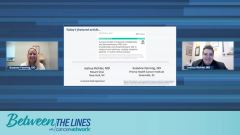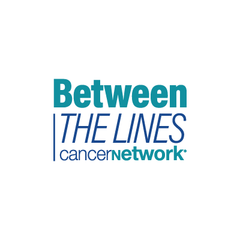
IRD vs Rd in Routine Clinical Practice: Baseline Characteristics
Drs Fanning and Richter review the baseline characteristics of patients included in the routine clinical practice publication of ixazomib, lenalidomide, and dexamethasone [IRD] versus lenalidomide and dexamethasone [Rd] in patients with relapsed/refractory multiple myeloma.
Episodes in this series

Joshua Richter, MD: Here, we can see the baseline characteristics from this real-world study comparing IRD [ixazomib, lenalidomide, dexamethasone] versus RD [lenalidomide, dexamethasone]. One of the things that’s quite difficult in looking at real-world practice is to completely balance the 2 arms. I think overall they were pretty well balanced. We see statistically insignificant P values for M-protein type, light-chain type, ISS stage [International Staging System], and sex. However, from an age standpoint, it looks like there were some differences with the Rd group having more patients over the age of 75.
Suzanne Fanning, DO: I agree. I think the baseline characteristics are very similar. I think that this particular trial showed in that real-world environment that patients of all ages, unfortunately, can suffer from multiple myeloma. As we continue the baseline characteristics here, we can see ECOG status, which was not statistically significant. Neither was renal function or number of prior therapies. We can, however, see that there was significance with regard to extramedullary disease. We see more extramedullary disease in the IRD patient population compared to the Rd population.
Joshua Richter, MD: Absolutely. Whereas some of these imbalances in terms of heavy-chain or light-chain subtype really don’t affect the outcomes, we know that extramedullary disease is absolutely a negative predictive factor. Beyond that, when you want to get granular about it, we can even differentiate between osseous space extramedullary disease, that bony lesion that has broken through and has a soft tissue component, versus a pure soft tissue extramedullary lesion. And going from no extramedullary to osseous to nonosseous, you have gradually worsening outcomes. Even though IRD—spoiler alert—is going to be the better outcome here, they definitely had a harder group to overcome.
We can see the previous therapies that the patients had in the 2 arms, the IRD and the Rd arm. In general, they are well matched; there were a higher number of autologous transplants in the IRD group. This skewing was probably due to the fact that the Rd group had a significant number of patients over the age of 75 who were potentially deemed ineligible for autologous stem cell transplant. However, for the remainder of the prior therapies, it seems to be fairly well balanced for patients having previously received proteasome inhibitors, immunomodulatory drugs. And again, the majority of the patients in the IRD arm relapsed, and in the Rd arm, they were primary relapsed.
Suzanne Fanning, DO: I think these are important characteristics. As we go through the discussion of the paper, this helps the reader and clinicians understand that patients had relapsed disease, had refractory disease, had received other IMiDs, and tries to decipher how that background relates to their response to therapy later.
Transcript edited for clarity.
Newsletter
Stay up to date on recent advances in the multidisciplinary approach to cancer.















































































